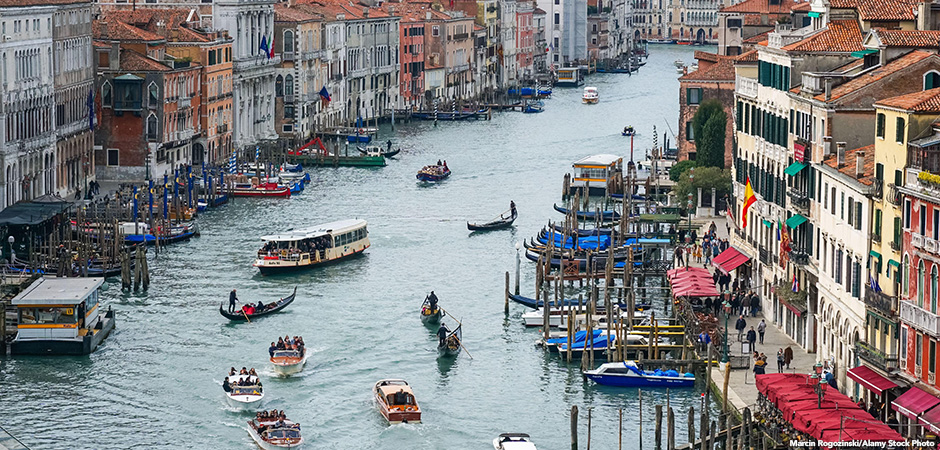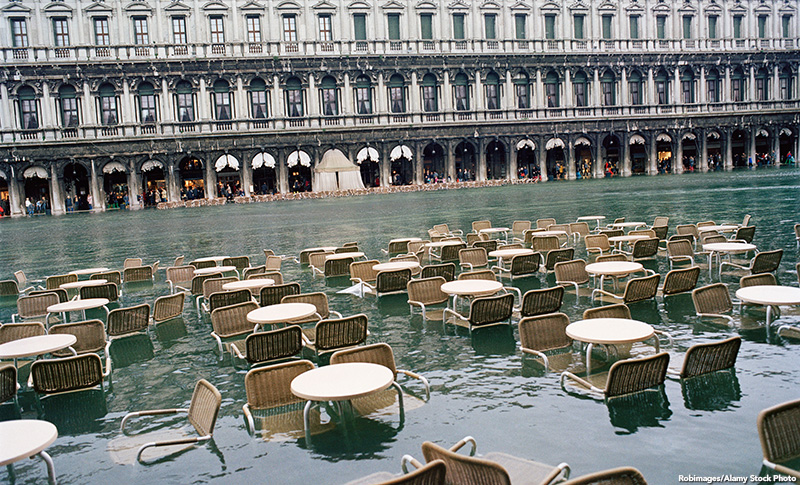
Venice, Italy, is fighting a battle against the ocean that surrounds it. Rising sea levels and sinking land means that the city faces the constant threat of devastating floods. Luckily, Venice has developed a solution: the Experimental Electromechanical Module, or MOSE. But this system, which was fifty years in the making and cost five billion euros (about $5.3 billion) to build, is not without controversy. Here, btw takes a closer look at MOSE, how it came to be, and what it might mean for Venice in the future.
The Problem
The city of Venice is surrounded by water. The city is built on more than 100 small islands. Over 400 bridges connect these islands. People use small boats and other watercraft to travel the canals between the islands. The city is surrounded by the Venetian Lagoon, a small bay of water located between the Po and Piave rivers. The river waters combine to form the lagoon before flowing into the Adriatic Sea. Venice is sinking because the tectonic plates under the city are settling. In addition, the pumping of groundwater caused Venice to sink nearly five inches between 1950 and 1970. Since then, even though groundwater pumping has stopped, Venice still sinks about two millimeters a year. Meanwhile, the average sea level at Venice has risen almost a foot since 1900.

The Solution
In 1966, a massive flood caused Italy’s National Research Council to hold a competition to devise a plan to preserve the city from future floods. The winning design was a series of sea walls that are attached to the ground on hinges. When not in use, the wall segments are filled with water. This causes them to sink below the surface of the sea. When they are needed, the water in the flood wall segments is replaced with air. This causes the segments to rise on its hinged bottom and block the sea water from coming into the lagoon around Venice. When the threat of flooding has passed, the walls are refilled with water, and they sink below the water again.
The MOSE system took many years to build. The original plan scheduled the construction to be completed by 1995. But many years of a weak Italian economy and political disagreements in the Italian government resulted in construction delays. MOSE construction did not begin until 2003, and a new end-date of 2011 was proposed. Then, political controversy and debate over the proper construction materials delayed the project even further. In 2014, thirty-five people were arrested, including several government officials, for bribes and corruption associated with the project. After that, the project was almost abandoned. But then another huge flood in 2019 killed two people and put eighty-five percent of Venice under water. That tragedy provided the incentive that Venice officials needed to complete and test the project in October 2020. Thankfully, the walls worked.
The Future
Now, the new problem Venice faces is how often the walls will be used. Originally, experts estimated that the flood walls would be raised about five times a year. But in the past two years, the walls have already been raised forty-nine times. And the problem may only get worse. The United Nations Intergovernmental Panel on Climate Change estimates that by the end of this century, the sea level in Venice could rise by almost two and a half feet. But if MOSE is deployed too often, it will block the normal flow of water in and out of the ocean. Venice’s famous lagoon and canals will become swampy and algae infested. When the walls are raised, fishing boats are unable to get in and out of the lagoon. This could severely damage the city’s economy, which relies heavily on the fishing industry. In addition, every time the walls are raised, it costs the city $200,000 in energy and labor.
One possibility to address the fishing issue might be a system of locks that will help boats move in and out of the lagoon while the walls are up. In the meantime, the city is spending millions of euros to raise low-lying parts of the city so that the walls won’t have to be used so often.
